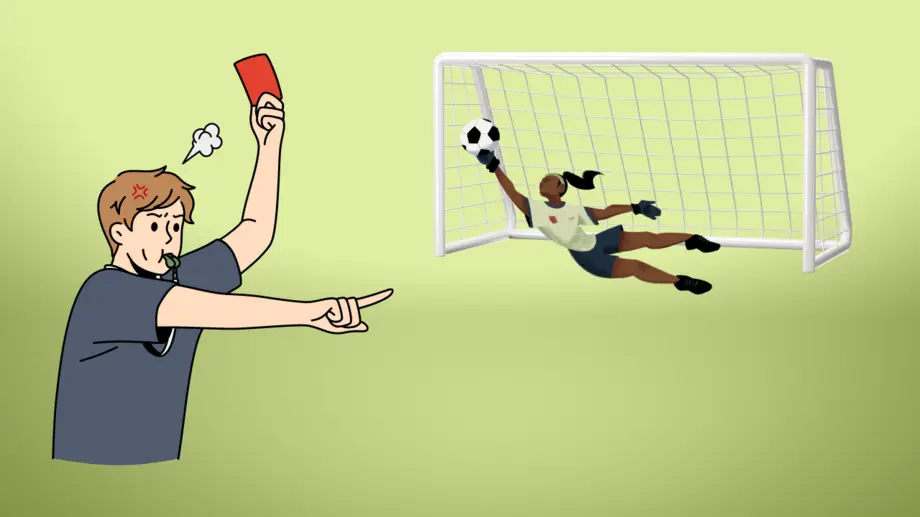Change in the Number of Substitutions in Football
Look at the change in Football rule 3 that concerns the number of substitutions.
The maximum number of substitutions in official competitions is 05 (five) and must be established by FIFA, confederations, and national associations.
In the case of men’s and women’s competitions in which the first teams of the highest category clubs or absolute national teams participate, and where the competition regulations must allow a maximum of 05 (five) substitutions per team, each team:
- Will have, at most, 03 (three) opportunities to make substitutions
- In addition to these 03 (three) opportunities, teams can make substitutions during the breaks.
If the teams make a substitution at the same time, they will have one substitution opportunity will be deducted from each of them.
When either team requests or makes multiple substitutions at the same time the game is stopped, these will count as only one substitution opportunity used out of the three allowed during the game.
Substitutions During a Football Extra Time
- When teams have not used the maximum number of substitutes or have not exhausted the maximum number of substitution opportunities, they may use during overtime the remaining substitutes or of the remaining opportunities.
- When the Competition Rules allow for one more substitution (an extra substitution) to take place during extra time, both teams will have the opportunity for an additional substitution.
- Substitutions may also be made both in the period between the end of regulation time and the start of extra time, and during the change of field interval at the conclusion of the first part of extra time. Also, these substitutions will not count as substitution opportunities when made at these times.
Maximum Number of Alternates
The maximum number of substitutes that can be registered for an official Football match will be from three to a maximum of twelve fifteen per team and stipulated by the competition regulations.
The competition regulations must also stipulate whether there will be an additional substitution in the case of overtime.
Change in the Draw for the Kick-off World Cup Series:
This change concerns Football rule 8.
About the procedure for starting the game:
The referee will flip a coin to draw the field, and the winning team will choose which side of the field they want to attack or whether to take the kick-off.
The drawing of the field and the kickoff by flipping a coin is the responsibility of the referee.
Change in the Penalty Toss Rule
This change concerns rule 10, which deals with the decision by free kicks from the penalty mark.
The new rule says that in addition to players and substitutes, members of the coaching staff can also be warned and sent off during the penalty shootout.
Preventing a Goal or Clear Goal Opportunity with the Hand
This change clarifies about a foul hand on the ball that prevents a goal or a clear scoring opportunity.
When a player prevents a goal or a clear scoring opportunity for the opposing team by committing an infraction with his hand, he must be sent off, regardless of where it occurs (unless it is the goalkeeper in his own penalty area).
FIFA explains that the reference to handball offences in the section of Law 12 dedicated to avoided goal-scoring opportunities could be misinterpreted as if it were possible to send off the goalkeeper for holding the ball in his own penalty area. Therefore, this clarification has been added in the “Offences punishable by sending off” section of Law 12.
Lack in an External Agent
If a player commits a foul on an outside agent – either on or off the field of play – and the referee has stopped play, the match will be restarted with a ground ball, unless the player has left the field of play without the referee’s permission, in which case an indirect free kick will be awarded, which will be executed from the point on the boundary line where the player left the field of play.
FIFA clarifies that the rule is clear in that it does not contemplate a free kick in the case of committing an offence against an external agent. However, if a player leaves the field of play without the referee’s permission and immediately commits a foul against an outside agent with the ball in play, an indirect free kick will be awarded for leaving the field of play without the referee’s permission.
This indirect free kick is taken from the point on the touchline where the player left the field.
Goalkeeper’s Position in the Penalty Kick
Change in rule 14 of Football regarding the position of the goalkeeper at the time of the penalty kick.
When taking a shot, the goalkeeper must have at least part of one foot in direct contact with, on, or behind the goal line.
FIFA clarifies that, previously, the goalkeeper had to have at least part of one foot touching or stepping on the goal line when taking a maximum penalty (either during the match or in the penalty shootout). Therefore, if the goalkeeper had one foot in front of the goal line and the other behind it was considered a technical infraction, even if no illegitimate advantage was gained that way.
World Cup Series:The text was reworded to avoid penalizing this position.
To explain this modification, it is pointed out that the spirit of the rule encourages the goalkeeper to place both feet in direct contact with or directly above the goal line until the maximum penalty is taken.
In other words, the goalkeeper cannot be in front of or behind the goal line.
